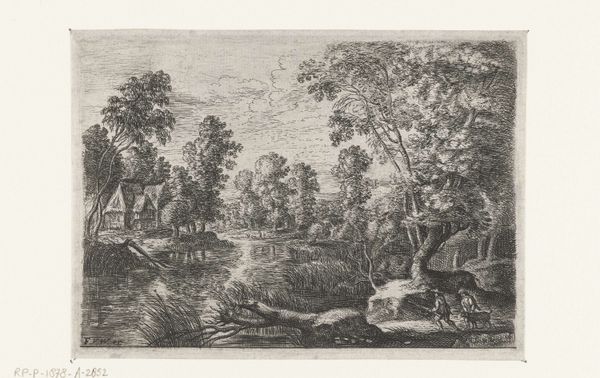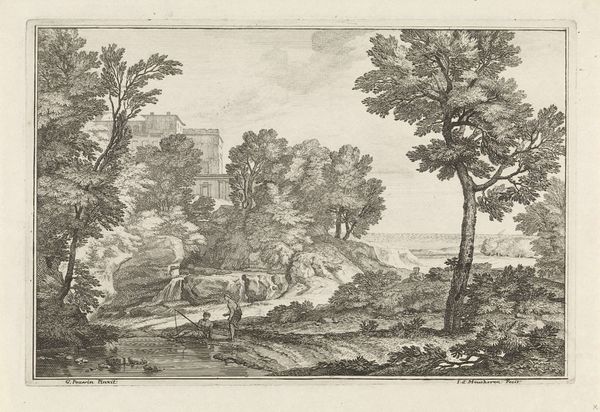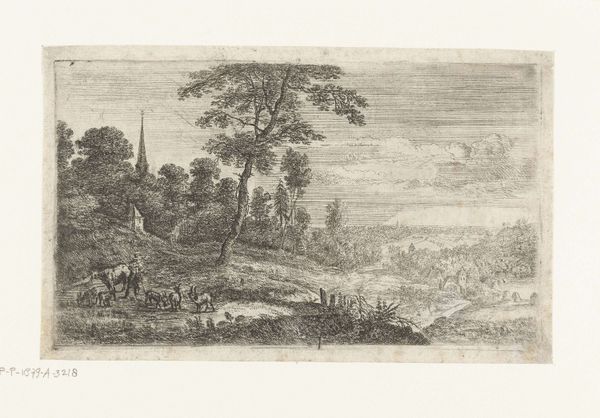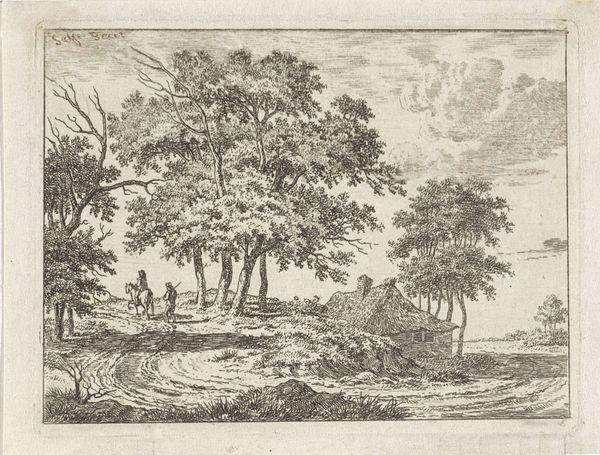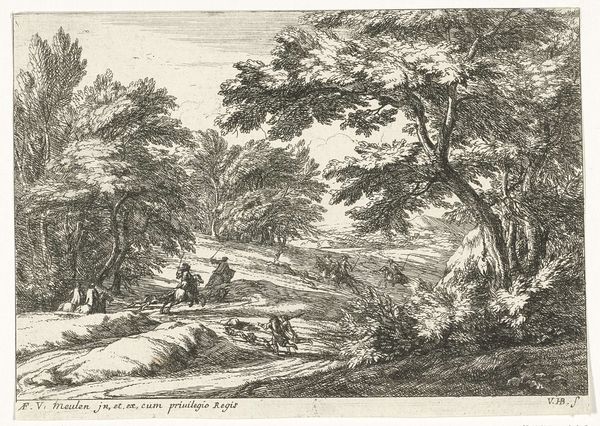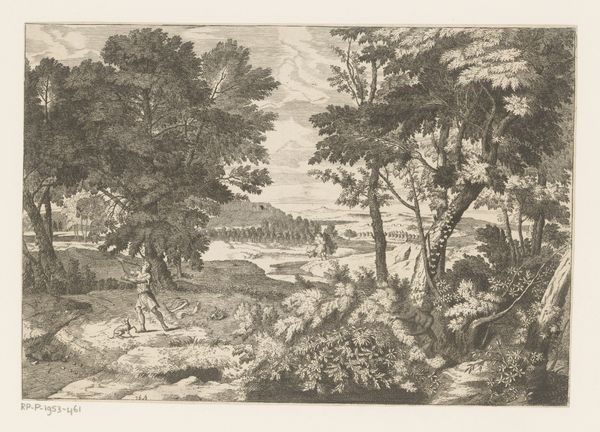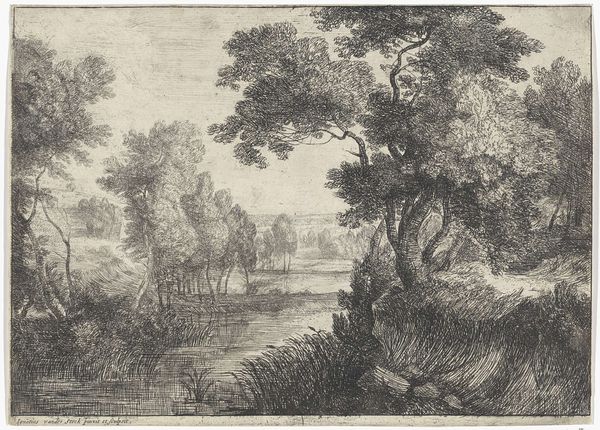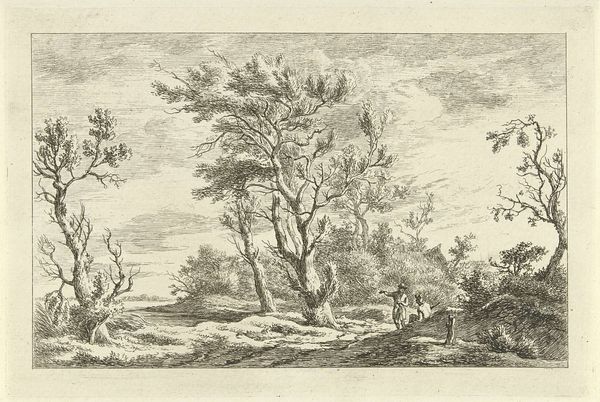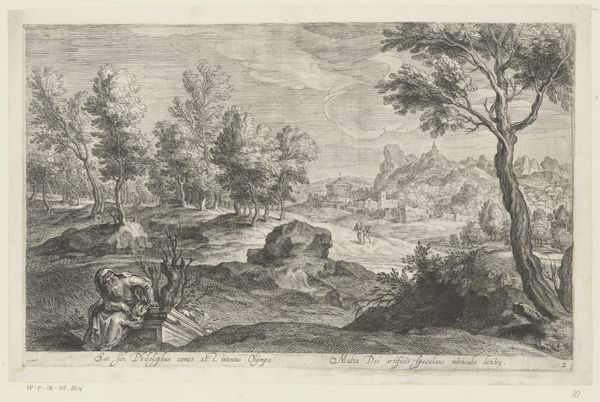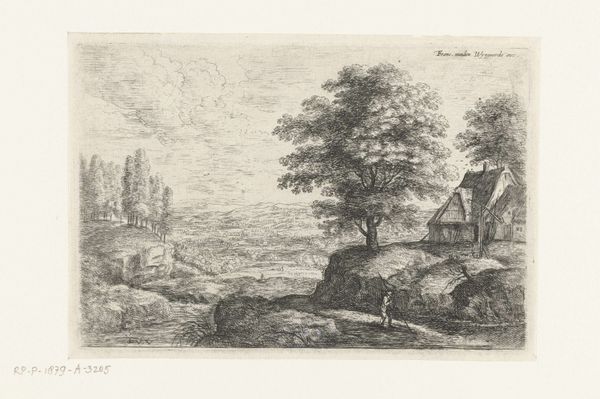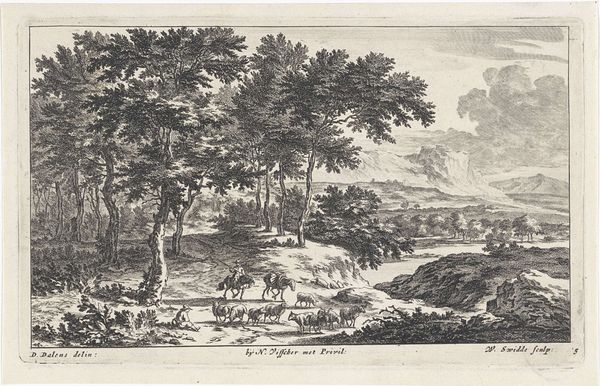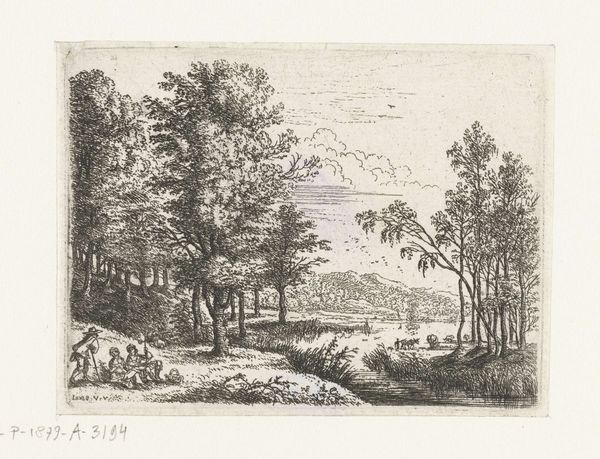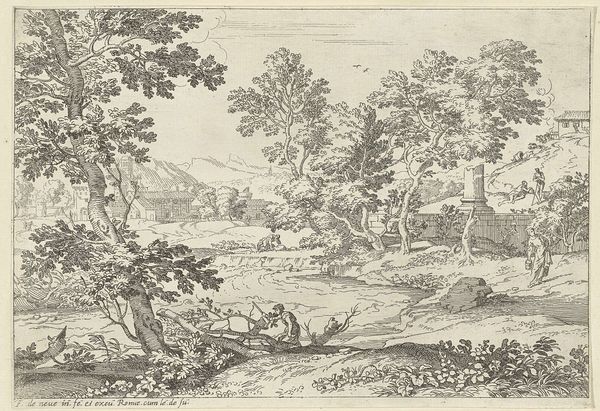
print, etching
#
baroque
#
dutch-golden-age
# print
#
etching
#
old engraving style
#
landscape
Dimensions: height 86 mm, width 132 mm
Copyright: Rijks Museum: Open Domain
Editor: Here we have Lucas van Uden’s "Landscape with Two Herdersjongens," made sometime between 1605 and 1673. It's an etching, a type of print, and the density of lines creating the shadows is really striking. What stands out to you about this piece? Curator: What immediately grabs me is the technique, and its relation to social function. Etchings, as printed works, facilitated the relatively cheap distribution of images. So, consider this: What does it mean that landscape imagery, with its romanticized view of pastoral labor, became more accessible to a broader audience in 17th-century Netherlands? Editor: That’s interesting… almost like a commodification of the countryside? How does that play out here? Curator: Exactly! Look at the seemingly straightforward depiction of labor. These "herdersjongens," shepherd boys, appear idealized. But were these prints simply celebrating rural life, or also masking the realities of agricultural labor and land ownership during that period? What was the value attached to representing these kinds of "common" workers? Editor: I never thought about landscape in terms of labor like that. Curator: The means of production, in this case the etching process itself, helped shape the content and its reception. These landscapes are commodities meant for specific consumption habits that existed back then. This reveals something interesting. Do you agree? Editor: I do! Considering how accessible these prints were and what they depicted is super eye-opening. I think I'll look at landscape art quite differently now.
Comments
No comments
Be the first to comment and join the conversation on the ultimate creative platform.
